Chia Seed: Everything You Need to Know
Today, it’s all about chia seed: everything you need to know. When you first hear the word chia, chances are you probably picture the chia pets from the ’90s that every child loved.
Even though chia seeds seemed to have only recently grown in popularity, they were actually an important food for ancient peoples thousands of years ago. This is my favorite: Salba Chia Seeds. Costco has a good Chia Seed as well.
This “superfood” can help you lose weight, and can be enjoyed in a number of different ways because of their versatility. Did you know that chia seeds can be used as a type of egg substitute when it comes to baking? It’s true.
I understand some people can’t tolerate chia seeds in their diet, often due to certain medications they may be taking, so be sure and check with your doctor before using them, just to be safe.
In case you missed these posts:
- Quinoa: Everything You Need To Know
- Lentils: Everything You Need to Know
- Bell Peppers: Everything You Need To Know
Chia Seed: Everything You Need to Know
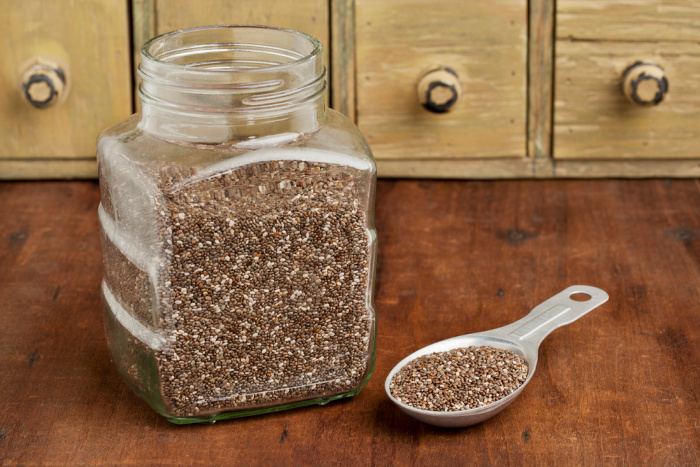
Don’t be fooled by their size. Chia seeds contain several nutrients and proteins that are densely crammed into them. Which only adds another reason why you should add them to your diet more consistently.
Here’s more about chia seeds and everything that you may not have known about them.
Fun Facts
Chia seeds are believed to have been one of the ancient Aztec and Mayan tribes’ staple foods. The word “chia” is actually a Mayan word that means “strength.”
Besides strength, chia seeds were believed to have healing powers as well. Not only were they enjoyed as food and for healing, but they were even used as a type of currency to trade with.
Around 500 years ago, the Spanish invaders that came to Central and South America did their best to destroy all the chia crops, in order to overtake these tribes and initiate Spanish rule.
Chia seeds can absorb liquid up to 9 times their original weight. This makes them an excellent ingredient for baked goods, porridge, pudding, and as a sauce thickener.
Even babies six months or older can benefit from eating chia seeds. Chia seeds contain omega-3’s that are huge when it comes to brain development.
Basic Info
Chia seeds come from a type of mint plant called the Salvia hispanica. They are small, round, and flat, ranging in color from white, black, or brown. Native to Central America, the seeds themselves can be consumed raw, or prepared in a number of different ways in all sorts of dishes.
The sprout of the plant is also edible, perfect for salads and sandwiches.
Types of Chia
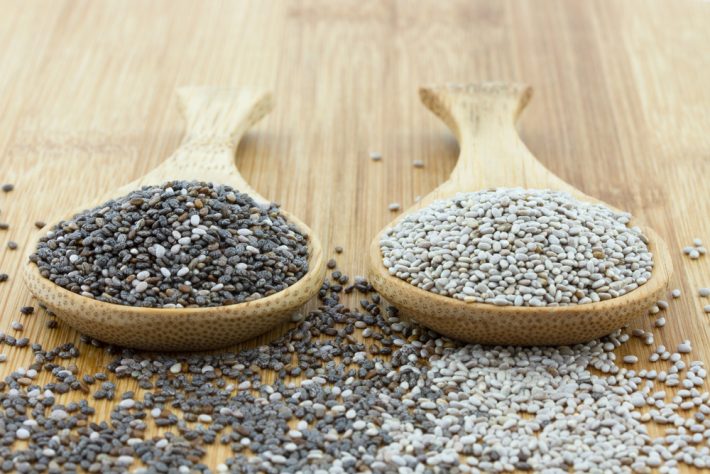
There are two different types of chia seeds, and the difference in color plays a role in what nutritional value you can come to expect from them. The chia plants that produce purple flowers will bring forth brown seeds, called “black chia.”
Then there are chia plants that produce white flowers that will eventually yield white seeds. The black seeds contain more fiber, while the white ones more protein.
To get the best of both worlds, try and track down chia that comes in a mix of assorted colors.
Nutrition Facts
Chia seeds contain a great deal of fiber, omega-3 (good cholesterol), omega-6, and protein. Even more so than most grains and cereals.
Even though chia seeds consist of about 42.1 grams of carbohydrates (per 3.5 ounces), 80% of those happen to be mostly fiber.
They come packed with several vitamins, antioxidants, and minerals, including calcium, phosphorus, copper, manganese, iron, magnesium, selenium, vitamins A, C, and E.
They also have several plant compounds such as caffeic acid, chlorogenic acid, quercetin, and kaempferol. All of which play important roles and functions in sustaining good health.
Health Benefits of Chia Seeds
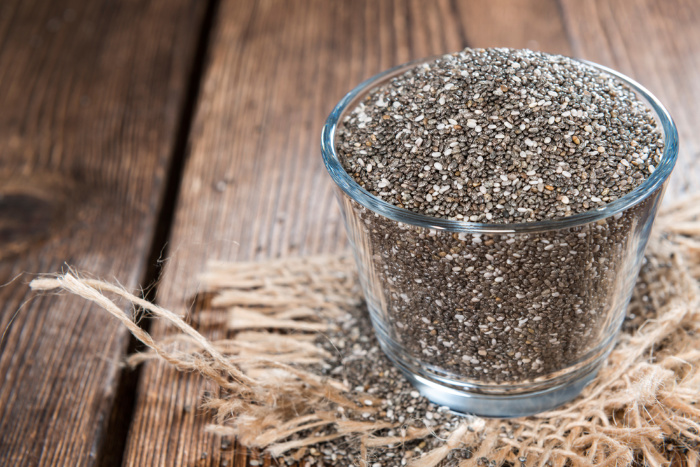
Because of their mineral and nutrient density, chia seeds bring you a number of health benefits that you may find worthwhile. Here’s a brief list of the major benefits that you can expect. I confess, I add one teaspoon to my smoothies every morning!
Improves Blood Sugar Level
Patients that deal with high blood sugar levels on a regular basis are more prone to having type 2 diabetes, metabolic syndrome, and even heart disease.
Studies have shown that chia seeds help lower blood sugar levels, because of their help in reducing insulin resistance in our bodies.
Lowers Blood Pressure
People who struggle with high blood pressure are more prone to get chronic diseases like heart disease. Chia seeds, as well as chia flour, have been found to help lower blood pressure when it gets too high.
Improves Gut Health
Chia seeds are cram-packed full of fiber, which is a really good thing. That’s because most people don’t consume as much fiber as they should. Fiber helps promote good gut health, prevents constipation, and reduces the risk for a number of diseases.
May Help with Losing Weight
Like I mentioned earlier, chia seeds can absorb an abundant amount of water, which in turn helps you feel full more quickly, and prevents you from eating as much.
Fiber also plays a key role in this. So there’s a good chance that chia seeds are one of those superfoods that can help you with your weight loss.
Where to Find Chia Seeds
If you don’t know where to look, it can be extremely difficult to track down chia seeds at your local grocery store, particularly if you don’t buy them on a regular basis.
Some of the first places that you should look include the rice/quinoa section, the health food area, or the baking aisle.
How to Store Them
Chia seeds can last for what seems like forever. Between 4 and 5 years to be exact. They contain healthy oils that make it a better idea to store them in the refrigerator in an airtight container for maximum shelf life.
But there’s nothing wrong if you choose to place them in the pantry where it’s dark and cool.
More Ways to Enjoy Them
If you’re growing tired of simply adding them into a pudding, check out these recipes that may excite you. Some other ways to enjoy their many benefits would be to add them to smoothies, yogurt, cereal, stir-fry, bread, salad, cakes, oatmeal, pancakes, and even jam.
Final Word
These energy-boosting seeds provide you with so many health benefits, leaving you with even less reason why you shouldn’t have them as more a part of your family’s diet.
How do you enjoy your chia? What else would you add to this resource called chia seed: everything you need to know? May God bless this world, Linda
Copyright Images: Chia Seeds Black and White Deposit photos_32804911_s-2019, Chia Smoothie Depositphotos_100246730_s-2019, Chia Seeds Fresh Depositphotos_40535363_s-2019, Chia in a Jar Depositphotos_10659597_s-2019

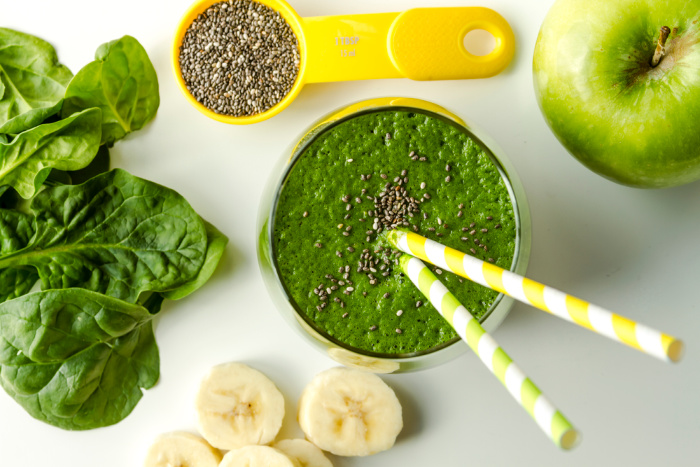

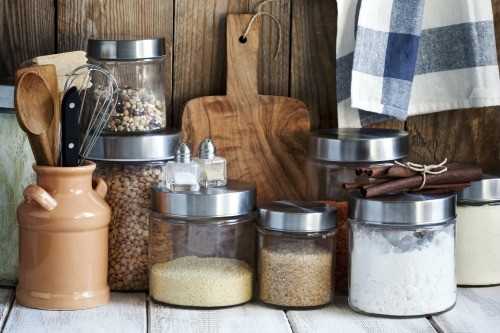
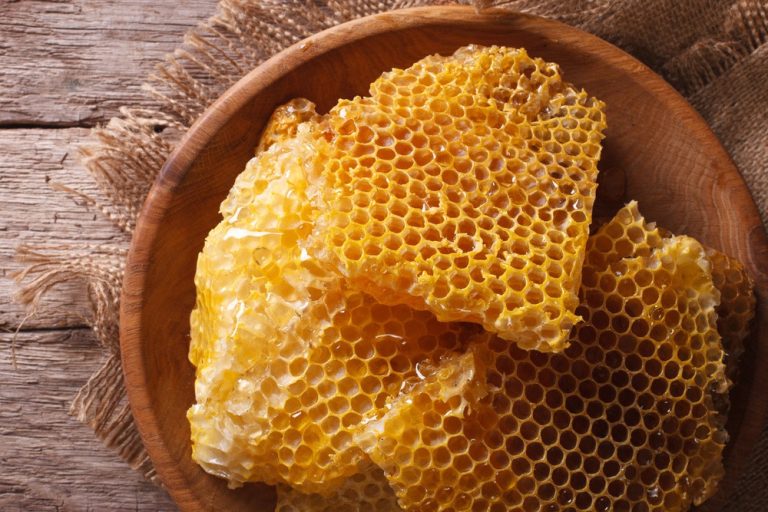
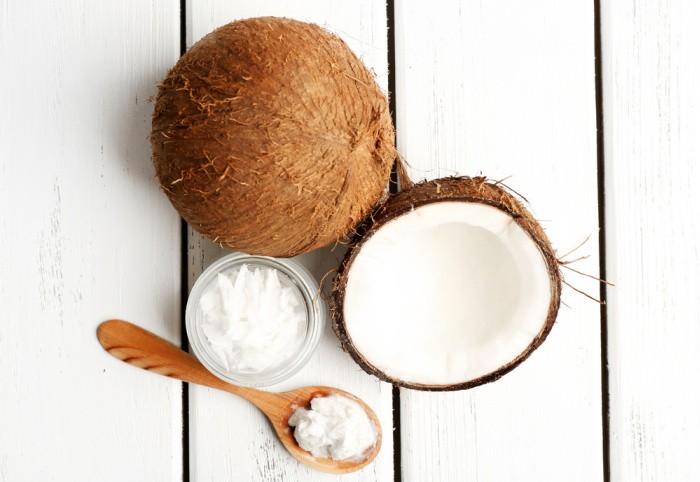
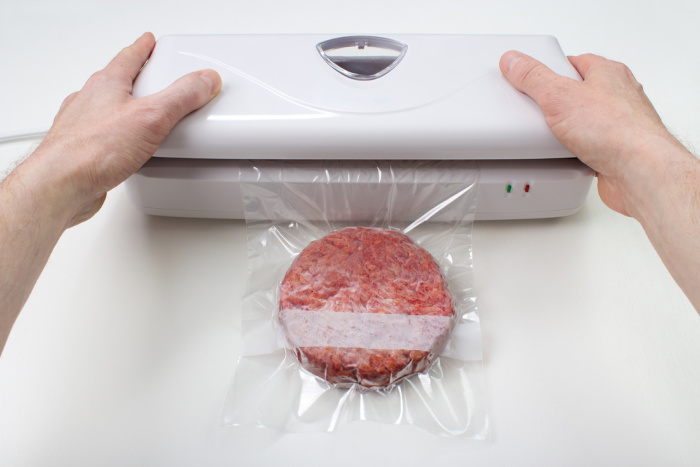
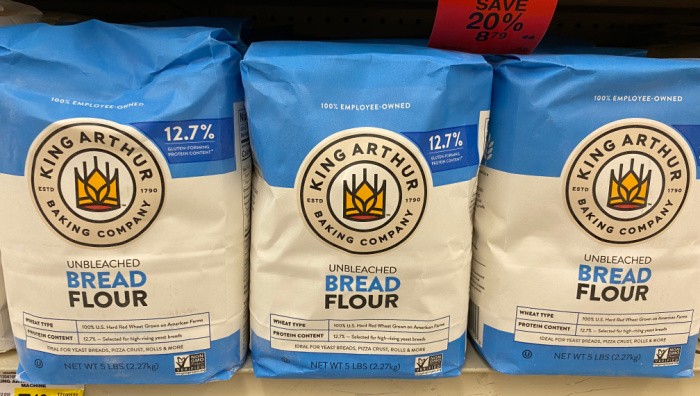














Just a note: Because chia seeds lower blood pressure, some caution should be taken for those of us who have a naturally low blood pressure. I passed out and ended up in the hospital! I had only used it twice – putting one tablespoon of chia seeds in my oatmeal two mornings in a row.
I understand that as my older brother uses insulin, but I myself take pills. One has to balance the effects of medication, food and even the exact time as to when you eat these seeds. Once you know their effects on your body and sugar levels or blood pressure their properties can be useful and beneficial.
But like anything that can alter or even improve one aspect of your current condition and health, one should test it first and use with caution to see how it affects you and also in some cases to allow your body to become accustomed to the new food.
One point is that the carbs and fats would raise blood sugar, but then the reduction of insulin resistance counters that. They are in a sense counter productive creating opposite effects. While curious and interesting, I would be cautious and observant of how it might affect myself or anyone else who decides to attempt to benefit from chia seeds.
Hi Frank, thank you for your comment, not everyone can eat chia seeds, that’s for sure. Medication alters what we can put safely into our bodies. Great tip, Linda
Hi Kathie, oh my gosh, that’s awful!!!! I’m so glad you mentioned this, thank you. This is another reason why I always say, please check with your doctor. I’m so glad you’re okay now. Stay well, stay safe, Linda
I believe that the Mayan/Aztec peoples would have consumed these in very small amounts. A little in their tavel pouches would have been consumed over days. So if adding these to our diets, start with really small amounts…. like less than 1/4 tsp. A tablespoon of chia could easily turn into 8 or 9 tbsps. when added to liquids. That’s several ounces of fiber hitting our digestive tract.
That being said, I love to add a tiny bit of chia (1/8 tsp) to overnight oatmeal and to plain yogurt when I need extra energy. Also add to muffins and even hamburger dishes to get extra bulk/fiber/protein in the dish. I keep it to about a tablespoon of chia at most. That 3lb bag from Sam’s Club lasts a long time!
I
Hi BDN, I love hearing your ideas about how you use chia. It’s such a good superfood for those who can tolerate it. I’m going to add it to my oatmeal, I love it! Stay well, my friend, Linda